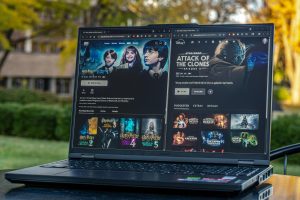Huskies not getting knocked on its grass
October 21, 2003
There is a question many college football programs across the nation face.
Comfort or looks?
Although it may sound like someone buying a pair of shoes, it’s nowhere near the same.
With the technology of today, there are many different options for football teams when it comes to choosing a playing surface.
Do you go with the looks of astroturf, or the soft surface of grass? That used to be the question when deciding which playing surface to use.
First there was plain natural grass. Then in 1965, astroturf was invented and used by NIU in 1969 for the first time. Nearly 30 years later came FieldTurf, a mix between the natural grass and astroturf.
In 2001 NIU spent $1.1 million to make improvements on the now 38-year-old Huskie Stadium. Included in the $1.1 million, which was half of what cost to build the entire stadium in 1965, was a new playing surface – FieldTurf. Up until then, NIU had played on astroturf for more than 30 years.
“Playing on the turf we played on at Central Michigan was like playing on a rug,” said NIU coach Joe Novak, about CMU’s astroturf. “This is like grass, this is beautiful. I hope I never, ever see one of those astroturf fields again. I never did like it, and I hate it even more now. It’s awful.”
According to fieldturf.com, the surface feels like grass, looks like grass and plays like grass. NIU All-MAC cornerback Randee Drew feels the exact same way.
“This is the best stuff right here,” Drew said. “I’ll back that up. This is just like grass. You might get your foot caught in there every now and then, but I haven’t played on a field better than ours yet. We’ve played in some pretty good stadiums; Alabama, Auburn.”
FieldTurf was invented for tennis courts and golf courses. Now it is also used on football and baseball fields. There are 17 NFL teams that use FieldTurf in their stadiums or practice facilities.
FieldTurf’s grass fibers are surrounded and stabilized by a blend of what the company calls “synthetic earth” – a mixture of rounded silica sand, rubber granules and a material called Nike Gind, which is made from re-ground athletic shoes. The sand and rubber are layered to form what is supposed to be a soft, shock-absorbing surface.
Of the five games the Huskies have on the road this season, two of them are on grass, one on astroturf and the other two on other forms of hybrid turf.
Eastern Michigan, which plays NIU at Huskie Stadium this year, plays on an astroturf field. EMU has had the surface for six years, football coach Jeff Woodruff said. Maintenance was one reason the Eagles chose astroturf, he said.
“I know the cost of upkeep and maintenance on the field had something to do with it,” said Woodruff on why EMU chose astroturf. “I know there has been talk about using the new kind of turf. I think it has to do with when we need to replace our current surface. I’m sure when the time comes to replace it, we’ll choose the new turf.”
Astroturf does have benefits other than just the upkeep and look of the field.
“They get better traction on the astroturf, but everyone would rather play on the new stuff because it feels more like grass,” Woodruff said. “[The new turf is] also better as far as injuries go.”






